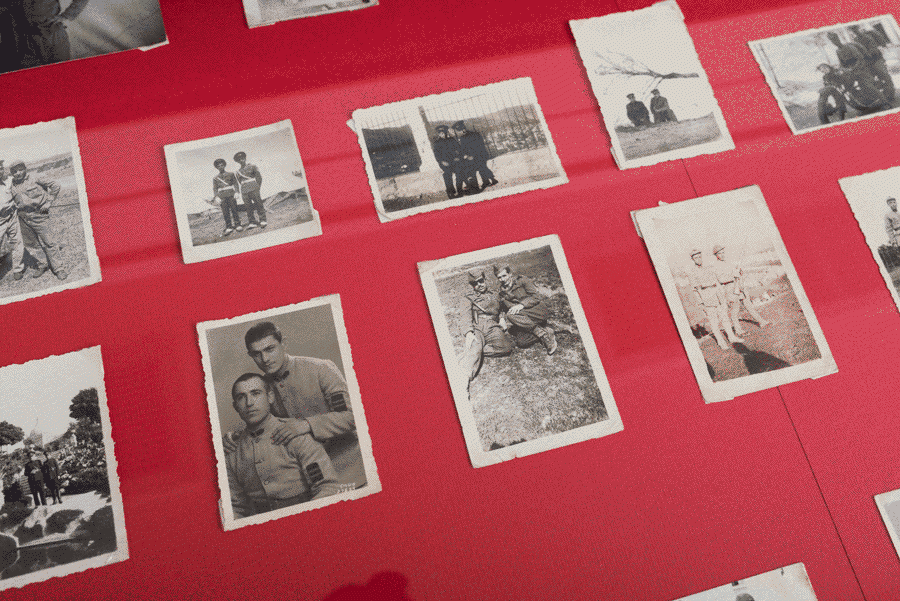Through his photo and video works, Dor Guez, the son of a Palestinian Christian and a Tunisian Jew, typically explores the complexity of his own origins. However, for The Sick Man of Europe: The Architect, Guez shifts the focus onto the persona of Kemal P., an architecture student who, on graduation towards the end of the Second World War, was recruited by the Turkish army. The show is the second of a five-part project, examining the stories of five creative individuals from different Middle Eastern backgrounds, each of whose artistic practice was interrupted due to their obligation to fight in various twentieth-century wars.
In the ground-floor gallery, a two-channel video installation focuses on 13 photographs documenting the Turkish Republic’s Victory Day Parade in Ankara and the state funeral of its first president, Mustafa Kemal Atatürk, in 1938. The images are shown on one screen, while on the other, a hand draws mesmerising sketches of the buildings and monuments surrounding the two public spectacles depicted in the photographs. The narrator, speaking as Kemal, describes the images, and in doing so two other figures come to the fore: Atatürk, who Kemal obviously admires, and Ahmed, Kemal’s close friend, who is seen in most of the photographs and is the photographer of some. Homoeroticism is strongly evident, especially in an image taken by Ahmed, in which Kemal is “sitting between the legs of glorious Turkish soldiers next to the statue of Atatürk in Ulus Square,” as he explains in the narration.
This queering of history is continued on the second floor, with a selection of photographs from Kemal’s private collection, arranged inside an architect’s steel plan chest, almost all depicting muscular uniformed men. A couple of these images, documenting soldiers in naive situations – rolling in snow or standing in fields of flowers – have been transformed to scanograms – the result of an X-ray-like scanning technique that reveals every little crack or defect in the photographs, its handling and age laid bare.– enlarged and wall-hung.
Guez, who founded the Christian Palestinian Archive in 2009, tries to tackle many issues with this show: European imperialism; forbidden homosexuality; national and military identities. Yet his apparent interest in the formal photographic object regrettably takes over, flattening the politics and important historical questions in favour of a simplistic aestheticisation of the past. To some extent, this is reminiscent of the critique of Atatürk’s secular revolution: that it dealt with formal symbols rather than pressing social problems, and homogenised an entire people. This critique is not addressed in the show, and Atatürk’s revolution is presented, through the photographic fixation, in an overly aestheticised fashion, just like the ‘Architect’ himself. Walter Benjamin’s warning against the aestheticisation of politics is well known, but especially relevant in this case, where the reflection of the past tends to become nostalgic, rather than critical. Perhaps alongside the yet-to-be-realised parts of this project this show could be seen in a different light.
This article was first published in the October 2015 issue.
